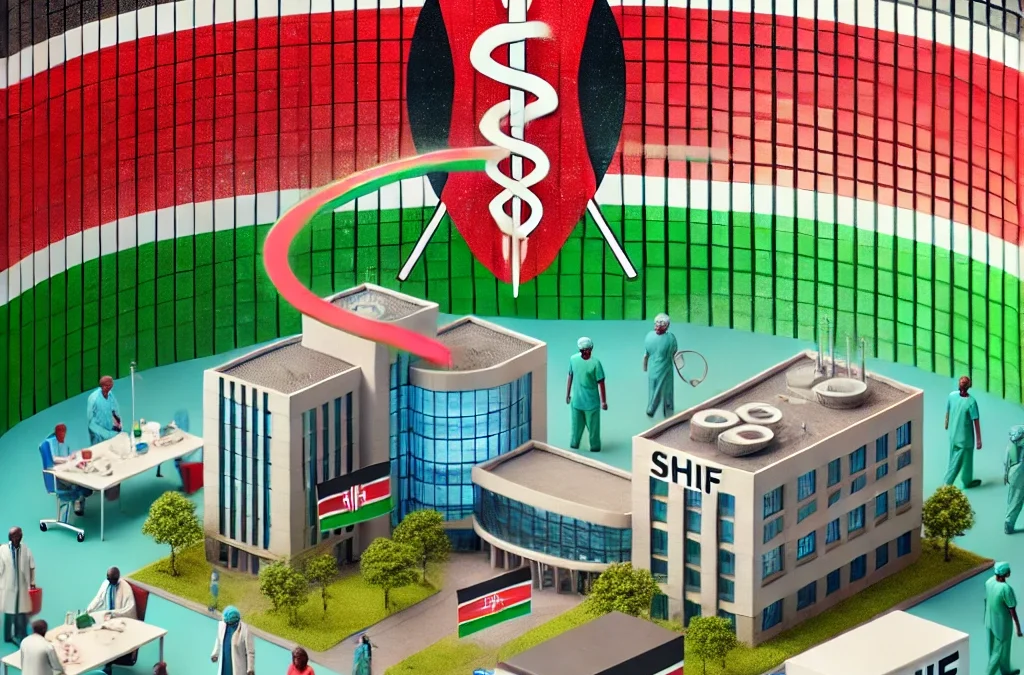From NHIF to SHIF: Ruto’s Healthcare Gambit
On September 20th, the Court of Appeal upheld the reforms transitioning Kenya from the National Hospital Insurance Fund (NHIF) to the Social Health Insurance Fund (SHIF). This ruling confirms the government’s plan to implement significant changes in healthcare financing and access, aligning with its goal of achieving Universal Health Coverage (UHC) as part of Vision 2030. We investigate its potential.
The predecessor fund, NHIF was established as the National Health Insurance Fund in 1966 as a department under the Ministry of Health. It late became a parastatal through the NHIF act of 1998. NHIF has 95 fully autonomous branches, satellite offices and a presence in the 47 Huduma Centres across the country. The fund has played an important role in providing health insurance, particularly for formal sector employees. For self-employed and other informal sector workers, membership is contributory (voluntary) and available at a fixed premium rate of 160 Kenya Shillings per month. Overall membership enrolment for formal and informal sector populations has reached 4.5 million people (11% of the Kenyan population). While coverage is high for the formal sector (98%), coverage of the informal remains low at 16% of the informal sector population.
Helpful as it has been, the fund is inadequate. It’s primary focus on inpatient care meant that many Kenyans still faced significant out-of-pocket expenses for basic outpatient services and preventive care. As a result, NHIF failed to provide comprehensive health protection, especially for informal sector workers and low-income households. These gaps made healthcare inaccessible to large portions of the population, particularly in rural and underserved areas.
In response to the gaps in NHIF, SHIF model is designed to address existing healthcare shortcomings by expanding coverage to a wider range of services, including outpatient care, chronic disease management, and preventive health interventions. This shift has critical economic implications for Kenyan households, particularly as contributions will be structured at 2.75% of an employee’s gross salary for formal sector workers or 2.75% of annual gross income for non-salaried income earners, with a minimum contribution of 300 shillings. As a result, the financial burden of healthcare is expected to decrease significantly, especially for low-income families who often pay out-of-pocket for basic healthcare needs.
The Kenyan cabinet approved the full transition from NHIF to SHIF by the end of 2024. The courts have afformed the cabinet decision and provided that NHIF be terminated beyond 2024.
Beyond the contributory model, where individuals and employers are expected to make payments into the fund, the exchequer will still be responsible for financing critical components such as primary healthcare and emergency services. This reliance on government funding highlights a significant structural challenge—balancing comprehensive healthcare coverage with fiscal constraints.
From the onset, it is evident that SHIF’s success will heavily depend on the quality of healthcare systems, especially in rural and marginalized areas. While the NHIF had its weaknesses, Kenya’s healthcare system has long faced systemic challenges. These include but are not limited to inadequate medical facilities, a shortage of healthcare professionals, and uneven resource distribution. In some places, patients have to wait for weeks before accessing a theatre. Elsewhere, doctors come once or twice a week, hence unable to aid the population in medical emergencies. Even in areas where health professionals are available, the numerous and periodic strikes leave patients unattended. Further, there are now questions on the quality of doctors under training and the ethics of practice, with many doctors sending families to India for surgeries that are medically unnecessary.
To address the erratic payments seen in the previous scheme, the government has introduced an upfront fee for informally employed individuals in SHIF. This is perhaps borrowed from the private sector where health insurance is paid upfront at the beginning of the year. This move risks creating an adverse selection problem. Healthier individuals, finding the upfront fee too high for the perceived benefits, may opt out, leaving a pool dominated by high-risk participants who require more healthcare services. Additionally, this could exclude a large portion of the informally employed population, undermining the broader objective of universal access to healthcare. As a result, healthcare costs would rise, and SHIF’s financial sustainability would be compromised.
From the documents availed to the public, SHIF claims will be managed by a third-party entity. This raises concerns about potential inefficiencies, higher administrative costs, and profit-driven motives, which may prioritize cost-cutting over patient care. Relying on a private intermediary could also lead to delays in claim processing and a lack of transparency, undermining trust in the system. Moreover, involving a private party might conflict with SHIF’s goal of equitable access, as it could introduce barriers for vulnerable populations who may face difficulties navigating a more complex claims process. Privatisation of public healthcare, promises a null return.
The transition from NHIF to SHIF presents a critical juncture in Kenya’s healthcare policy and management, with far-reaching economic implications. If successful, SHIF could transform the healthcare landscape in Kenya, providing millions of people with access to affordable, high-quality healthcare, reducing poverty, and boosting economic productivity. The begging question is; will Ruto’s gambit pay off?
Odhiambo Ramogi
@odhiamboramogi

